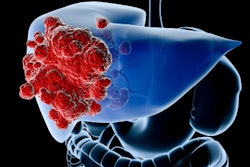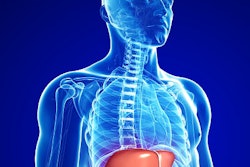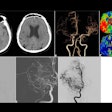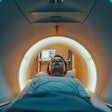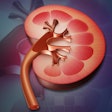CT images are better than electronic health record (EHR) and CT report data when it comes to diagnosing sarcopenia and sarcopenic obesity, researchers have reported.
The findings are important they indicate that "sarcopenia and sarcopenic obesity are underdiagnosed clinically in the EHR and in CT reports," wrote a team led by Juan Zambrano Chaves, MD, of Stanford University School of Medicine. The group's results were published April 15 in Radiology.
Both sarcopenia and obesity are potentially reversible conditions associated with numerous negative clinical outcomes, the investigators noted, and although the "definition of obesity is widely known, physician knowledge of sarcopenia is limited." Yet similar to obesity, there are now established guidelines for preventing or mitigating sarcopenia through exercise and nutrition, although how well used these guidelines are -- either through information taken from the electronic health record, from CT reports, or from CT imaging -- has not been sufficiently assessed.
"[Although] body mass index can serve as a surrogate measure of health risk, body mass index can both over- and underestimate adiposity and muscle content," Zambrano Chaves and colleagues explained. "Hence, recent obesity consensus guidelines recommend confirmation of excess adiposity through direct measurement of body fat, where available … [furthermore] sarcopenia co-occurring with obesity, identifiable via CT, warrants recognition as a distinct clinical entity due to the pathogenic interaction between the two and the increased risk of functional decline and metabolic disorders that surpasses the impact of either condition alone."
The researchers investigated the hypothesis that "there is a discrepancy with sarcopenia reporting, both with EHR diagnostic coding and with CT reports, versus the actual presence of reduced muscle mass on CT images." They conducted a study that included 17,646 adults who underwent contrast abdominal/pelvic CT between 2013 and 2018; patient data was culled from the electronic health record.
The frequency of sarcopenia and obesity was determined by diagnostic codes and axial CT exam report analysis (searching for terms such as "myopenia," "myosteatosis," "sarcopenia," "obese," and "obesity") and was assessed by an open-source AI tool that labels muscle and fat at the third lumbar vertebra (L2) level (Comp2Comp). The team used data on the frequency of sarcopenia and obesity using the International Classification of Diseases (ICD) codes across 274 hospitals to benchmark diagnostic rates.
The group reported the following:
.tg {border-collapse:collapse;border-spacing:0;} .tg td{border-color:black;border-style:solid;border-width:1px;font-family:Arial, sans-serif;font-size:14px; overflow:hidden;padding:10px 5px;word-break:normal;} .tg th{border-color:black;border-style:solid;border-width:1px;font-family:Arial, sans-serif;font-size:14px; font-weight:normal;overflow:hidden;padding:10px 5px;word-break:normal;} .tg .tg-1m4i{background-color:#cbcefb;border-color:#ffc702;text-align:center;vertical-align:top} .tg .tg-1kwi{border-color:#ffc702;text-align:center;vertical-align:top} .tg .tg-meu8{background-color:#9698ed;border-color:#ffc702;text-align:center;vertical-align:top}
| Sarcopenia and obesity findings in a cohort of 17,646 patients | |||
|---|---|---|---|
| Condition | ICD codes | CT reports | CT scans |
| Sarcopenia | 0.05% | 0.005% | 28.5% |
| Obesity | 17.4% | 0.16% | 15.7% |
| Coexisting sarcopenia and obesity | 0% | 0% | 5.7% |
"Automated CT image analysis found that objective measurement of low muscle mass was three orders of magnitude higher than documented in the medical record with EHR coding or CT reports," the researchers wrote. "The frequency of sarcopenia diagnosis in the EHR at our institution … was comparable to that of discharge codes across 274 institutions … [but] in contrast, using the CT images, we found sarcopenia in 28.5% of patients, comparable to the prevalence estimates in the sarcopenia literature."
They also emphasized that, on CT imaging, 5.7% of patients were identified as having sarcopenic obesity, a condition not otherwise documented in the electronic health record or CT reports.
 Example CT scans show skeletal muscle and visceral adipose tissue (VAT) area measurements in four patients with a similar body mass index (BMI), calculated as patient weight in kilograms divided by patient height in meters squared, at the L3 vertebral level, along with corresponding skeletal muscle index (SMI) and VAT t-scores. Images and caption courtesy of the RSNA.
Example CT scans show skeletal muscle and visceral adipose tissue (VAT) area measurements in four patients with a similar body mass index (BMI), calculated as patient weight in kilograms divided by patient height in meters squared, at the L3 vertebral level, along with corresponding skeletal muscle index (SMI) and VAT t-scores. Images and caption courtesy of the RSNA.
What do the findings suggest? That there's an "opportunity to use automated AI tools for analysis of CT scans acquired during routine clinical care, without additional cost or radiation exposure to patients," according to the group.
"This study provides compelling evidence that sarcopenia and sarcopenic obesity are underdiagnosed clinically in the EHR and in CT reports," they concluded. "Given that AI tools are now available to quantify body composition features such as low muscle mass and increased visceral adiposity, factors that stratify risk and may affect management for individual patients, there is a crucial need to explore real-time implementation of AI tools for body composition."
The complete research can be found here.





